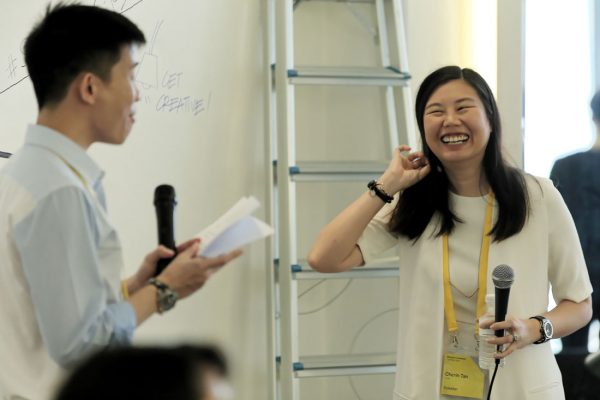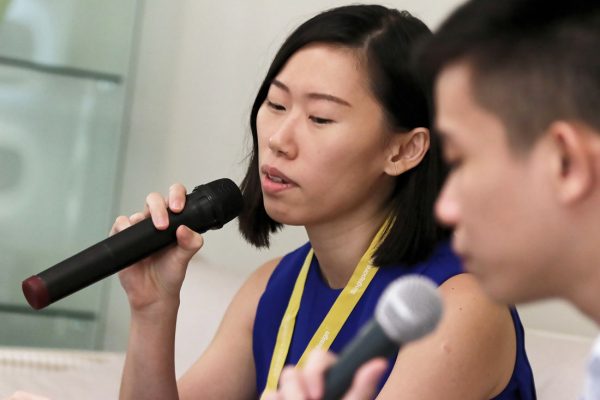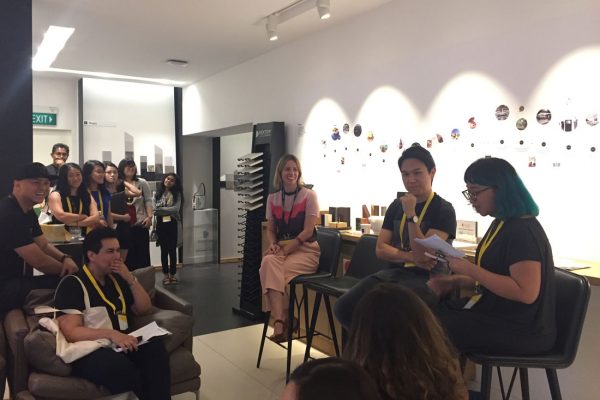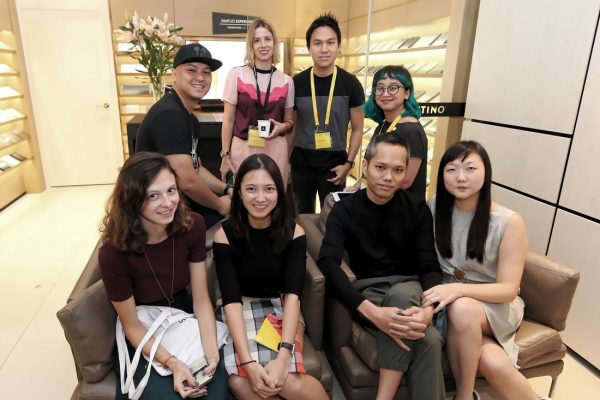At Singapore Indesign 2017 we invited three of the country’s most influential young designers to share their design journey, and gave the audience a chance to ask them anything. And we’ve got some interesting findings.

November 3rd, 2017
How do young designers see Singapore’s design industry today? What are their struggles? How do they overcome them? What more can the industry do to help them?
At Singapore Indesign 2017 (SGID17), we invited three of Singapore’s most influential young designers – Cherin Tan of LAANK, Wendy Chua of Forest & Whale, and Gabriel Tan of Gabriel Tan Studio – to share their respective design journeys through our new SGID Influencer programme.
The programme included a pre-event Instagram takeover themed ‘A Day at Work with…’ (click here to view their visual journeys), and a ‘5 Minutes with…’ Q&A session at one of SGID17’s nine venues during the event day. Members of the audience – students, especially – were invited to have a one-on-one Q&A session with the designers.
Among the interesting threads emerged from the sharing sessions were the importance of planning; retaining purpose and meaning in design, and cutting through the buzzwords in the age of social media; and bridging the gap between design education and the professional design industry.

“I think the word experiential design is thrown around a lot these days,” shared Cherin Tan when asked about the concept during her session at the Louis Poulsen showroom. “We are not about trying to create designs that are simply experiential; we’re about creating designs that have meaning and purpose – why are we doing this?”
She cited the Peranakan tiles used in one of her recent project, the Violet Oon Restaurant at Clarke Quay. The tiles were salvaged from old houses that were about to be demolished in Melaka. “It’s not just about beautiful tiles, but it’s about bringing Peranakan culture to the place.”
Cherin’s advice to young designers would be to look away from the screen more often. “They live in a digital world, are used to getting information very fast, and are very used to sitting behind a screen. When you ask them to lift a pencil and say, ‘Hey can you sketch this and tell me how it works?’ They struggle a little bit,” she shared of her experiences on working with recent design graduates.
The Q&A session segued into what more Singapore’s design industry can do to support its young designers. “I see a lot of support from the government and design schools. But I think what we can do more is bridging the gap between design education and the professional design life – where the school teaches them a little bit more to ease them into professional life.”

For Wendy Chua, co-founder of Singapore and Buenos Aires studio Forest & Whale, the thing that imbues meaning into design isn’t the design itself but the dwindling crafts that give it life. “It’s about a journey of nature discovery, material research and craft, and questioning what makes us human,” she said during her 5 Mins With… session at the P5 showroom.
Wendy delved into the making of The Machinist, a book that beautifully documented the last generation of industrial craftspeople in Jalan Besar. She also talked about the unconventional materials she’s worked with and the importance of not losing sight of traditional crafts.

For Gabriel Tan, design is an exciting journey into the unknown. “There’s no one right approach for any project, but the most important thing is to design the process,” he said at his session at the Cosentino showroom. “Step one: do this, step two: do that. If you plan and do the process well, eventually it’s easier to come up with good ideas.” So far, this method has worked wonders for him, judging by the results, among them the Ariake furniture collection and the Furnishing Utopia project.
Asked by a member of the audience – an architect – about how he might convince his clients to buy in to his designs in a part of the world (here) that is plagued by copycats and replicas, Gabriel said: “You have to try to understand their motivation and try to work with that. The persuasion process is a part of the design – we’re also designing a strategy to convince people.”
“They didn’t teach that in school; they should,” said another member of the audience, designer Hunn Wai, echoing the thread that emerged earlier during Cherin’s session. The audience hummed its agreement.
Another member of the audience, a design student in her final year, asked about the strategy of finding employment for design graduates – how do you know which way to take?
“The first easy thing to do is to ask yourself, where do you want to work? What kind of projects do you want to do and what kind of work do you appreciate? Find a studio who does that, and not just one, find five and then modify your portfolio to suit them. Do targeted job applications rather than sending the same resumes to 100 studios, which doesn’t make sense,” advised Gabriel.
He added that there were two common mistakes made by design graduates. “One: some of them felt that they were not ready, in which case the best way is to consult someone more senior, be it their peer or teacher. And two: some students are perfectionists, spending two-to-three years perfecting their portfolio. In any case, I think procrastination is the biggest enemy of design. If you keep moving, you’ll get past it – it’s the same in every profession.”

A searchable and comprehensive guide for specifying leading products and their suppliers
Keep up to date with the latest and greatest from our industry BFF's!

Savage Design’s approach to understanding the relationship between design concepts and user experience, particularly with metalwork, transcends traditional boundaries, blending timeless craftsmanship with digital innovation to create enduring elegance in objects, furnishings, and door furniture.

Create a configuration to suit your needs with this curved collection.

Suitable for applications ranging from schools and retail outlets to computer rooms and X-ray suites, Palettone comes in two varieties and a choice of more than fifty colours.
The internet never sleeps! Here's the stuff you might have missed

Archie Moore’s kith and kin unveiled in the Australia Pavilion at the 60th International Art Exhibition of La Biennale di Venezia.

2024’s theme, “Reawaken,” calls for a journey through reinvention and sustainability.